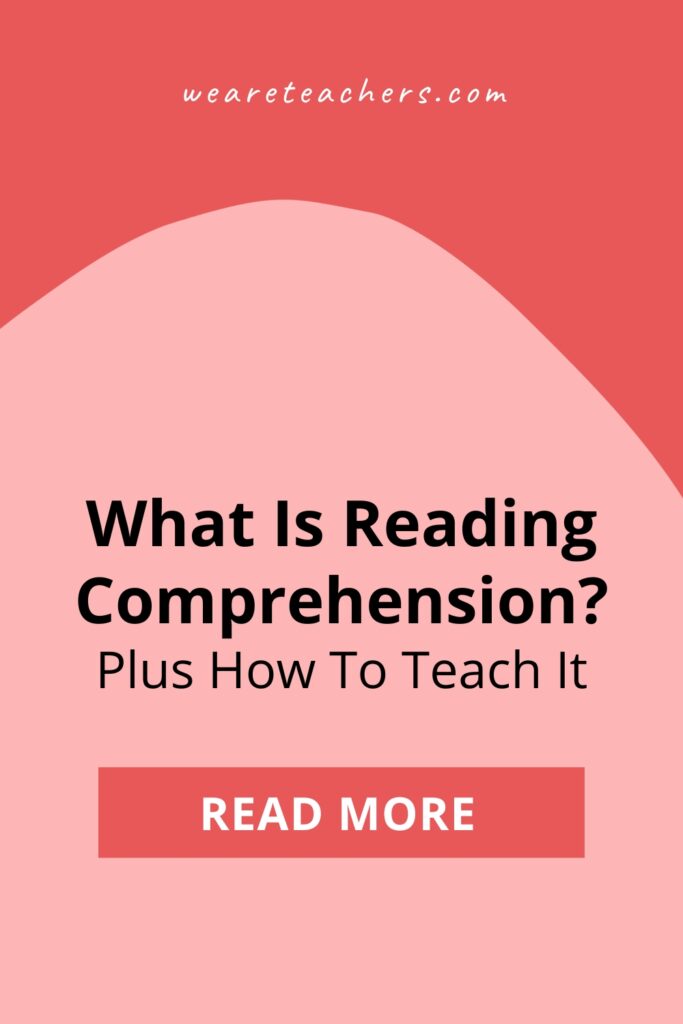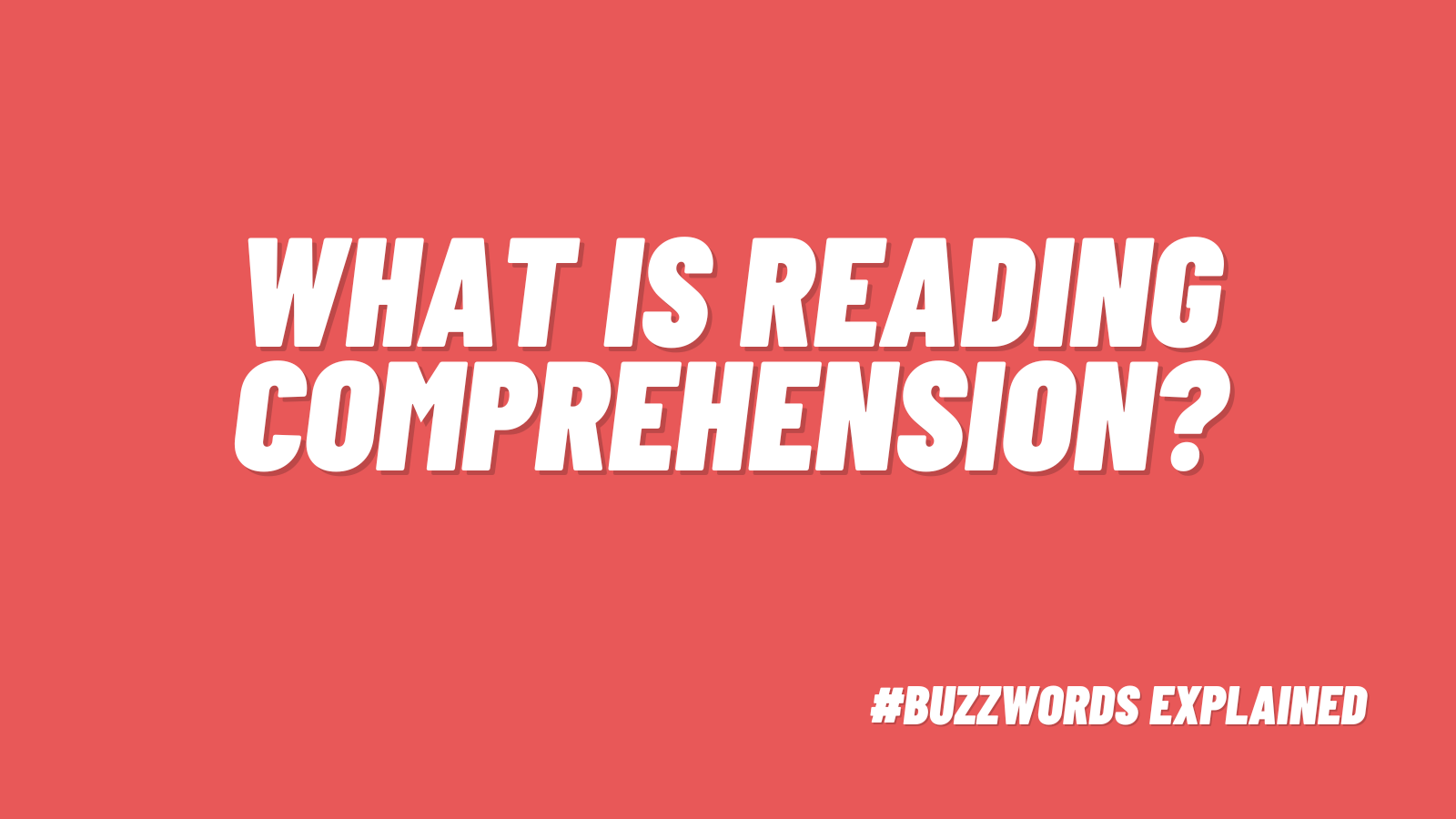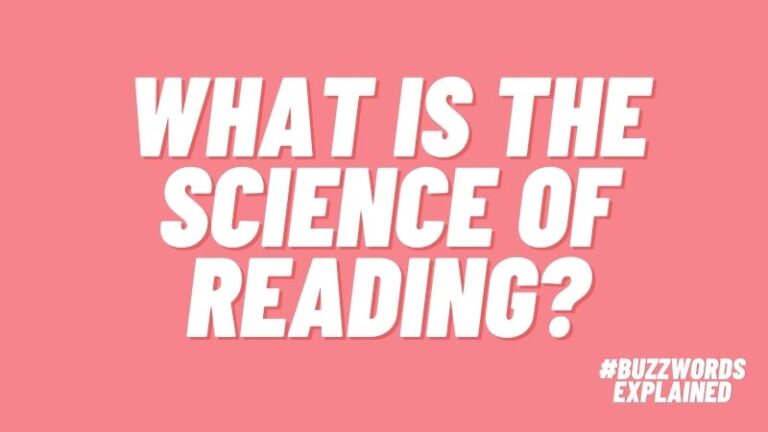The process of understanding what we are reading, also known as comprehension, is complex and nuanced. When we read, we seek to understand. Making meaning from text is the overlying purpose of reading, whether we are reading to learn or reading a story. That’s all well and good, but the important question is how? It’s not easy to just instantly understand something, even for seasoned readers. And what about those who are just learning to read or those who are beginning to read more difficult text?
Here we break down the science of what really matters so you can encourage learners to develop this important skill. It truly is integral to every aspect of their learning, even across subject areas. Phew! That’s a lot of pressure. But stay tuned as we dig deeper into what reading comprehension is and offer some helpful tips to get students thinking deeply and critically.
What does “reading comprehension” mean?
Comprehension is one of the five main components of reading, but it’s also the reason we read. All the bits and pieces we teach, the nitty gritty of literacy like sounds and syllables, ultimately helps us become more automatic in decoding. And when this happens, we free up our attention to comprehend, or make meaning. We read stories and text for a purpose and it’s our goal as readers to make sense of what we read. If that’s feeling like a lot, that’s because it is! It’s very meta and therefore super complex. But this chart helps us think about the ways comprehension surrounds each of the other four aspects of literacy. It truly is the overarching goal.
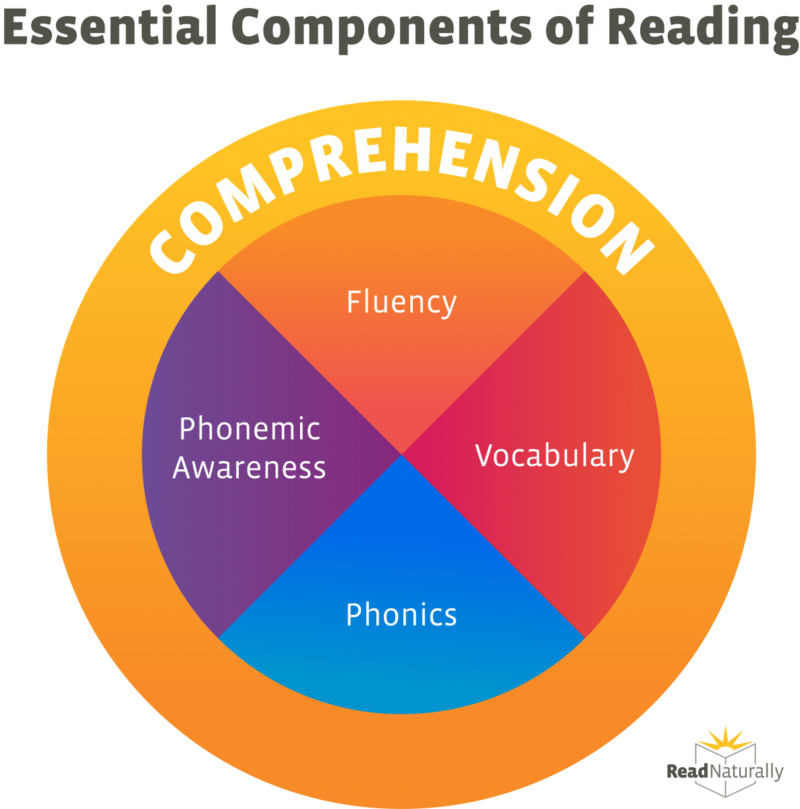
How do we comprehend?
Scarborough’s reading rope is a helpful tool for conceptualizing how skilled reading occurs and all the elements that must come together to make it work. While it all looks quite intricate, the simple view of reading can be boiled down to the equation at the bottom. Language comprehension x decoding = reading comprehension. Both of these elements have to coexist for understanding to occur.
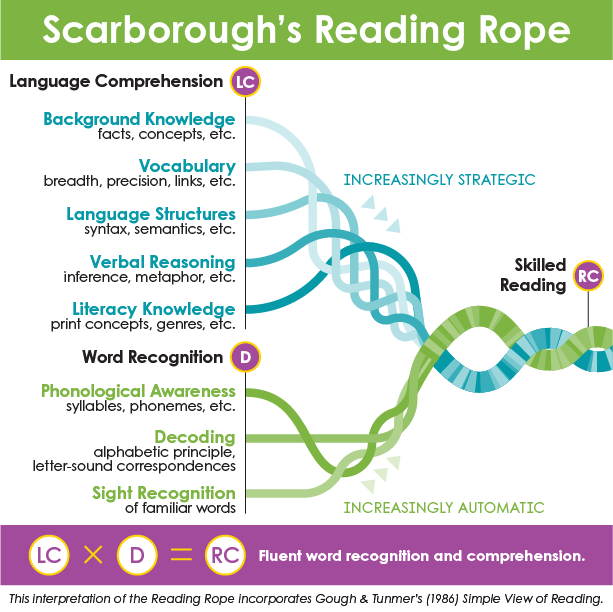
Why is teaching comprehension so complex?
The science of reading has helped us better understand how to teach literacy because we’ve discovered how the brain acquires decoding skills. Comprehension, on the other hand, is harder to research and study, since so many of the pieces are happening all at once. There are also many contributing factors that are different for each of us, which makes it harder to conceptualize and break down into its essential parts.
There’s a recent debate in the research about whether background knowledge or the use of decoding skills and comprehension strategies contribute more to understanding. While we don’t know for sure, we believe it’s important to incorporate and emphasize both in your classroom. This way, you can’t go wrong.
It’s important to remember that comprehension is an outcome, not a skill. While we can’t “teach” comprehension itself, we do know what tools and strategies can help move students toward greater understanding. Let’s explore what that looks like.
Decoding
This is a big one.
Decoding is undoubtedly an integral part of comprehension because, of course, we cannot understand what we are reading without deciphering the actual words. The recent shift to a more science-of-reading-based approach to teaching reading honors our understanding of the importance of mastering phonics skills.
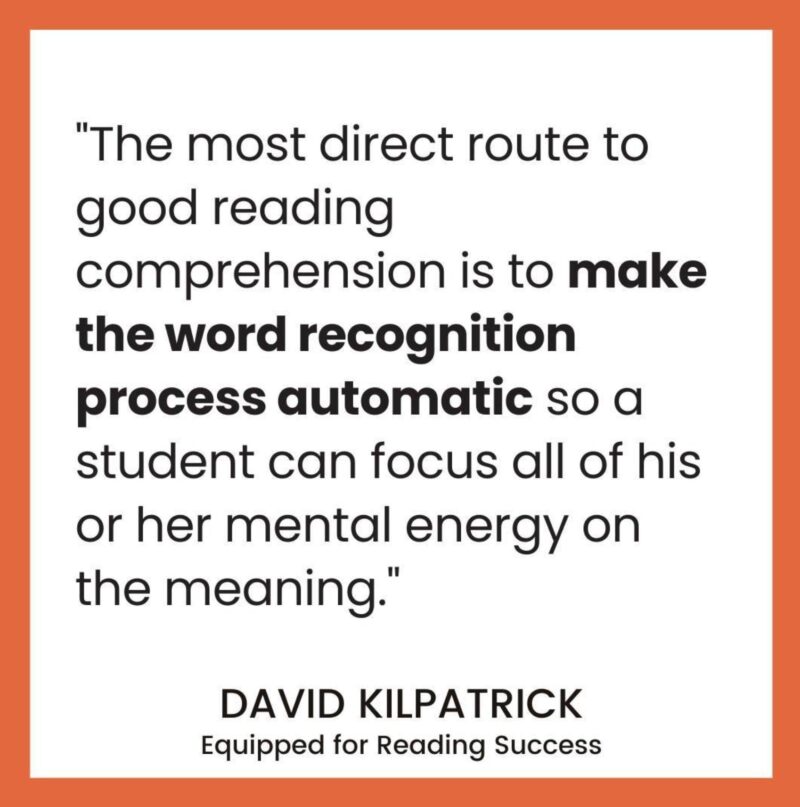
As readers become more proficient decoders, their speed and accuracy increases, which in turn supports their fluency. We can imagine that fluency is the bridge that connects decoding and comprehension. As you can see, all aspects of reading come together to affect comprehension, which is why literacy is such a heavy focus in the early grades.
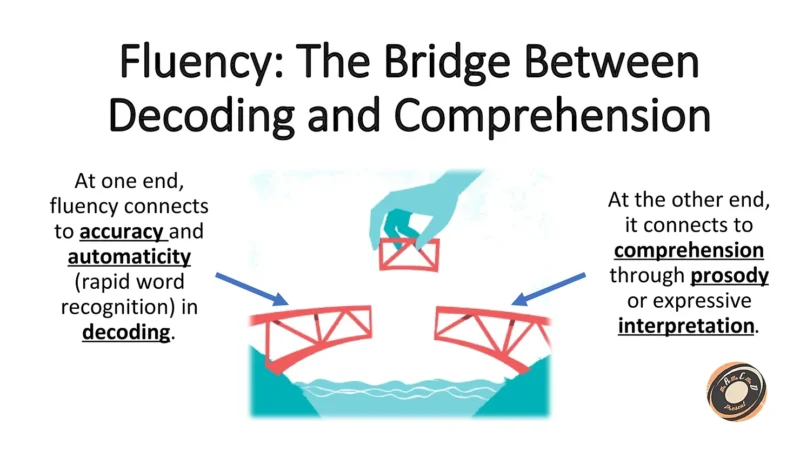
Background knowledge
As students become more proficient in decoding, interestingly the next step to supporting comprehension is increasing background knowledge. Newer research suggests just how important background knowledge is for understanding. Without bringing a base level of knowledge to a text, we will have a hard time making sense of it. This same research is revealing that comprehension strategies themselves don’t necessarily increase comprehension, instead knowledge is the driving force.
Background knowledge is not something we do intentionally. Researcher and popular blogger Tim Shanahan says that our brains are designed to make these types of connections. It turns out that applying our underlying knowledge to what we are reading automatically helps us comprehend, even if we aren’t aware we are doing it. Even so, we can also make our background knowledge work for us as a strategy to further understand. Things like previewing material or brainstorming what we know about a topic can help us access our background knowledge more effectively.
It’s also important to be aware of the role of privilege and background knowledge: “with access to greater resources, a child from a middle- or upper-class family is more likely to be taken on trips, attend events, or be exposed to experiences that deepen their cultural and social knowledge base.” As we teach comprehension strategies, we have to be mindful of helping to address these types of discrepancies.
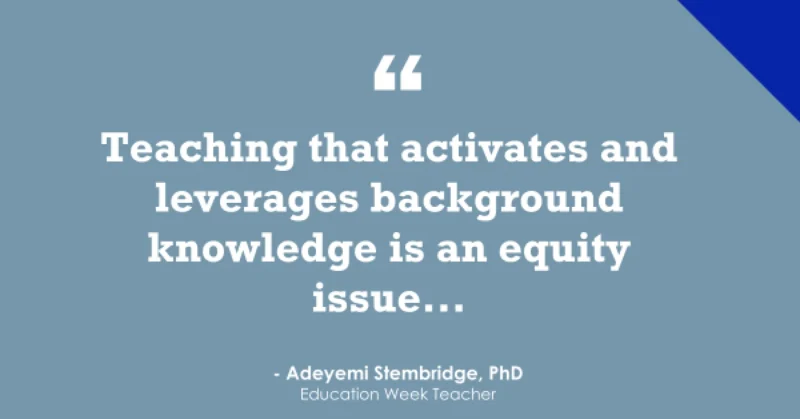
“Some students have background knowledge that is more valued by schools and thus more likely to be leveraged in their learning,” says Adeyemi Stembridge, an education researcher who specializes in closing achievement gaps.
But what about when students don’t have sufficient background knowledge about a topic? That’s where strategies become helpful.
Vocabulary
Not surprisingly, increased vocabulary knowledge correlates with greater understanding. The more words we know, the easier it is to comprehend a text. There are many ways we can help students develop a stronger vocabulary. For example, read-alouds are a phenomenal way to authentically support this skill.
Check out more helpful suggestions about how to enhance vocabulary specifically for comprehension. We love the idea of using a story map for a graphic organizer to keep track of our thinking! Plus, this organizer is a helpful tool for older students and can be used before, during, or after reading to keep track of new vocabulary learning.
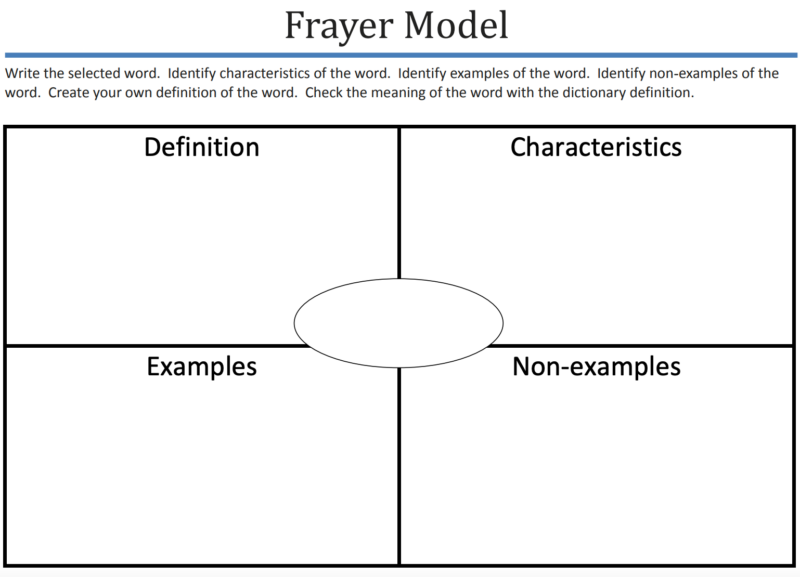
What other strategies support effective reading comprehension?
There’s no one-size-fits-all approach to teaching comprehension. As we’ve mentioned, it’s a complex process and requires many simultaneous systems to work cohesively. Here are some things you can do to make sure students not only understand the text you are reading with them but can also apply these skills to their own independent reading, now and in the future. Ultimately, we want them to become self-sufficient readers who can make meaning on their own.
Develop oral language comprehension early
Don’t wait to encourage comprehension until after students can already read. Preschoolers can actively engage in discussions about books that activate their knowledge and set them up for later success. Learn more about how building literacy with content levels the playing field.
Inferring
Inferring is making a guess about what you are reading based on what you already know, when it’s not explicitly stated in the text. According to Brent Conway, a guest on the Measured Mom podcast, “inferencing … really isn’t a reading strategy, it’s a cognitive skill. We make inferences at birth … so it’s not like we have to really teach people how to make inferences.” But we can encourage students to be more aware and conscious of when they are making connections so they can access the skill more purposely as a way to comprehend.
Susan Jones offers some tips for teaching inferring in her helpful video below. We love the idea of having students act like detectives as they figure out what the author is trying to say in a text.
Understanding “cohesion”
Cohesion is a fancy word that describes how easily texts can be understood based on sentence complexity and how the text flows and is connected in a meaningful way. When texts are not cohesive, they are harder to understand. But as researcher and blogger Shanahan suggests, lower cohesive texts offer a greater opportunity for readers to think critically and boost their engagement with the text and make more inferences.
Use writing as a tool
Natalie Wexler, an education writer and journalist, suggests that the most effective comprehension instruction includes teaching multiple strategies at once. A great way to incorporate multiple strategies at once is to use writing as an instructional tool. Explicit writing instruction is one of the most effective teaching strategies. Students learn the most when they practice doing in their writing what we ask them to uncover in their reading. For example, to promote the understanding of the main idea, encourage them to write a strong topic sentence.
Paying attention to sentence structure and syntax
It’s helpful for students to understand how words and syntax work together to create the structure of a text. Comprehension improves as students become more proficient with these foundational elements of stories and text.
Summarizing
Some strategies have been proven more effective than others, including summarizing the text. This is important because it requires readers to determine what’s important and the author’s purpose.
If you’re feeling overwhelmed by the breadth of comprehension, try this strategy first. Marnie Ginsberg, the creator of the literacy curriculum Reading Simplified, explains that learning how to summarize what we’re reading is one of the most, if not the most, important comprehension skills that will set up learners for more advanced understanding. Start with these three questions to get your students thinking about the main idea and how to succinctly summarize stories:
- Who are the main characters?
- What is the main characters’ problem?
- What’s the solution to the problem?
Also, check out the video below for a helpful analogy you can use with your students about summarizing and uncovering the main idea of a text. You can think of it like squeezing out a sponge and getting rid of the extra water (which represents the details) so you’re just left with the main ideas.
Self-monitor and ask questions
Good readers can ask themselves questions as they read and acknowledge when something is standing in the way of their understanding. Like we mentioned before, our hope is for students to become independent readers and thinkers, and encouraging these skills helps them get closer to this overarching goal. Four effective ways to monitor understanding include visualizing, asking yourself questions, drawing conclusions, and rereading to clarify.
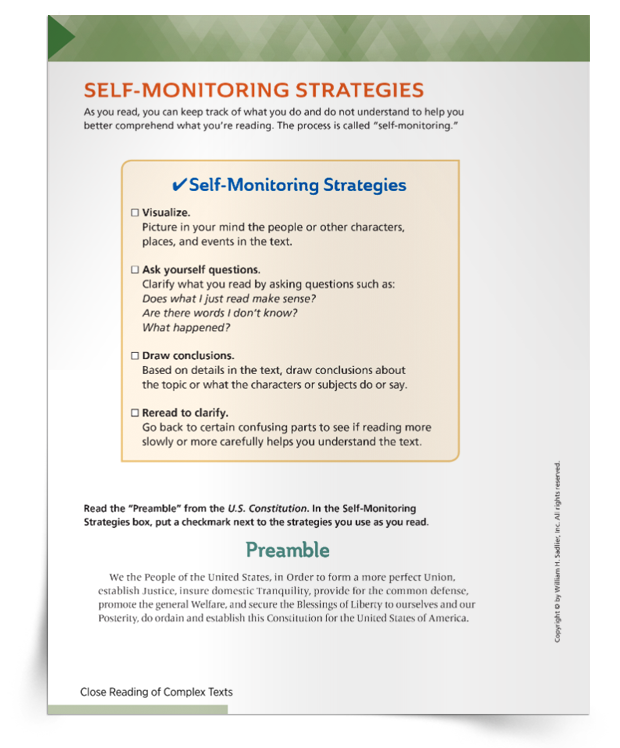
Metacognition
If we want students to be active participants in their reading, it’s important to encourage them to talk to themselves and develop a voice inside their head to ask questions or make connections without our prompting. This is known as metacognition and is similar to self-monitoring.
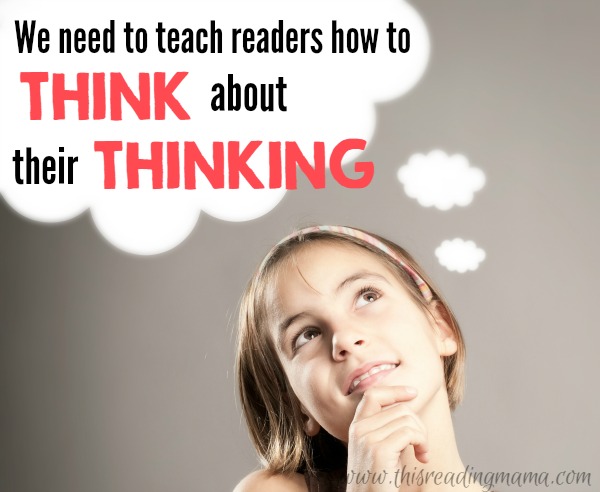
Thinking about what you are thinking about when you read is an invisible but vital part of reading, says This Reading Mama. “Our young readers need to see, hear, and be a part of this process. We need to let them in on the secret of metacognition; that, yes, hearing voices inside your head as a reader is normal.”
Books and Resources
Just like the science of reading is changing how we approach our phonics instruction, we’re learning more about how to best support students’ comprehension. Check out these resources for more information on the whys and hows of reading comprehension.
The Knowledge Gap
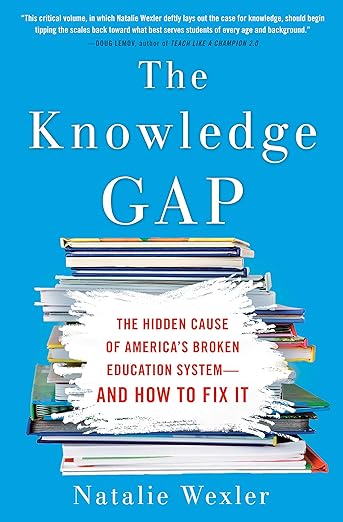
Check out The Knowledge Gap to learn more about our current education structure and uncover ways we can help all children access curriculum and content equitably.
Buy it: The Knowledge Gap at Amazon
Wit and Wisdom
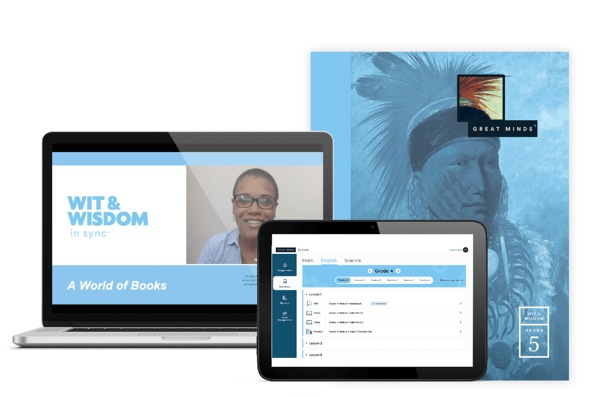
Using rich and diverse texts, this K-8 curriculum can help you break down what reading comprehension is so you can most effectively teach the important elements, including building knowledge and understanding of all types of content.
Learn more: Wit and Wisdom
The Reading Comprehension Blueprint
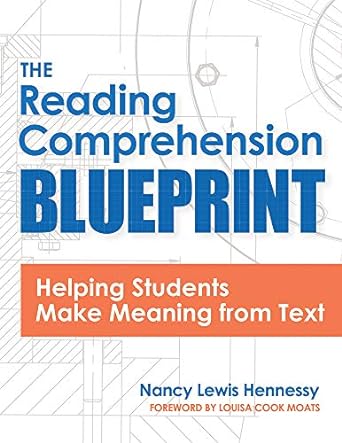
Filled with practical lesson plans and ideas, this wonderful resource helps demystify the complexities of reading comprehension and will set you up for success in your classroom.
Buy it: The Reading Comprehension Blueprint at Amazon
For more ideas and inspiration on reading comprehension, check out Fun Second Grade Reading Comprehension Activities and Engaging First Grade Reading Comprehension Activities.
For more articles like this, be sure to subscribe to our newsletters.
